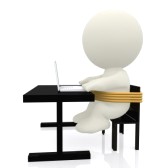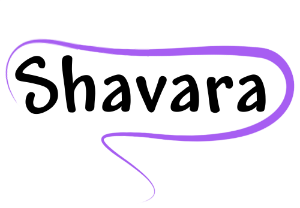I am of an age where kids that didn’t pay attention and/or couldn’t sit still in class were just called “hyper” and corporal punishment was okay. I can even remember one specific little boy from my First Grade class, a skinny little kid with a mop of unkempt blonde hair, super thick glasses and the need to get out of his chair during class. The teacher was the seasoned, no nonsense type and how do you think she dealt with this unruly youngster?

She tied him to his chair. Yep, you heard me, right to the chair in the middle of class. It probably didn’t help him learn any better, but at least he wasn’t running around disrupting class. She had teaching to do! She improvised and did the best she could for the rest of us. Looking back as an adult this seems really sad and mean, but in a way I am thankful. I was there to learn and that wasn’t going to happen with him running around the classroom.
If you are wondering,” why bother with this story?” Well, it is National Attention Deficit Hyperactivity Disorder Month and thinking about that, made me think of that hyper little boy and that challenged, frustrated teacher. I am sure like most people, I equate hyperactivity to ADHD, but this is not always the case.
So in respect to that boy and probably many others that were at one time tied to their school desk chairs or even sent to the principal’s office for a paddling, I would like to share some enlightening facts about ADHD.
1. It is estimated that 11% of school aged children in the US have ADHD and it can continue on into adulthood.
2. ADHD is more often diagnosed in boys.
3. Those who have ADHD do not misbehave on purpose; they typically are trying to behave the best way that they can.
4. There are three ADHD Types:
A. Combined ADHD (the most common subtype), which involves symptoms of both inattentiveness and hyperactivity/impulsivity
B. Inattentive ADHD (previously known as ADD), which is marked by impaired attention and concentration
C. Hyperactive-impulsive ADHD, which is marked by hyperactivity without inattentiveness
5. Details for the three ADHD symptom categories: Inattention, Hyperactivity and Impulsivity. Children with ADHD can present with symptoms from just one or multiple categories. each with some unique symptoms, difficulties and advantages:
A. Inattention symptoms can include:unable to focus on details, makes careless mistakes, does not listen when spoken to, inability to follow instructions and complete tasks, disorganization, frequently loses belongings, forgetfulness
B. Hyperactivity symptoms can include: inability to sit still or stay seated when needed, difficulty working/playing quietly, excessive talking, running around at inappropriate
C. Impulsivity symptoms can include: difficulty waiting for turn to speak or to play in a game
Fortunately, working with or around the symptoms of ADHD no longer include being tied to a chair or paddling. For many families, behavioral therapy examines disruptive behaviors and provides instruction to both the children and parents on how to encourage/develop healthy behaviors. Support groups can help the patient and family connect with others who have similar problems.
Healthcare professionals have developed viable tools to assist teachers and parents both when encountering a child diagnosed with ADHD.
Some of these tools include:
1. Maintaining a consistent daily schedule, including regular times for homework, meals, and outdoor activities.
2. Providing advance notice to schedule changes.
3. Providing an environment with as little distraction as possible.
4. Ensuring the child receives proper nutrition and required sleep.
5. Showing appreciation for the child’s good behavior.
6. Setting rules that are enforced consistently.
7. Frequent and open communication between the child's teacher and parent.
As each child is unique, so will the plan of treatment be. In some cases more than just techniques to accommodate inattention, hyperactivity, or impulsivity are required. In these instances, prescription medication treatment can be indicated. The most common medications that are used for ADHD are in the category of Psychostimulants; even though they are stimulants, they actually have a calming effect in people with ADHD.
Any medical condition, requires all involved parties to be well informed, therefore it is imperative to consult with the proper medical authority. The best way to guide a child through the challenges of ADHD, is to be on the right path. It may be a slightly bumpy path, or even a mountainous one, but reaching the destination successfully can be accomplished.


